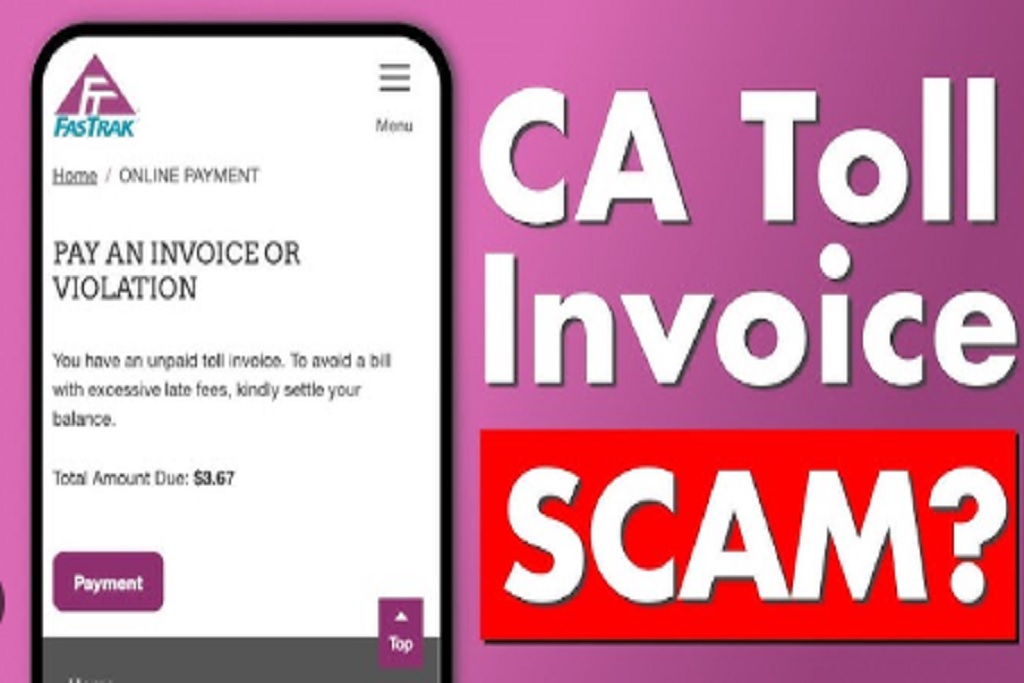Have you been sent a text message with a questionable claim that you owe unpaid tolls and need to pay immediately? Not only are you not alone. This text message scam has targeted drivers across California by tricking them into submitting personal information or credit card details to fake websites.
This insightful article will explain everything you need-to-know about the CA Toll Services con, including its workings, how to avoid it, and what steps to take if your account has been compromised.
CA Toll Services Scam overview
CA Toll Services, a fraud involving California Toll Services, involves unwitting drivers across California who receive text message stating they are owed toll invoices. These must be paid right away. It’s a phishing attack designed to trick users into giving out their personal information and financial data.
CA Toll Services noticed that you vehicle has an unpaid bill. To avoid extra fees of up to $59.89 (please settle the outstanding $5.79 balance), please pay your vehicle’s unpaid invoice.
The scammers created the fake message that looks urgent and official. These are some key facts about this scam text:
Recent phishing scams targeting toll invoices have increased in California. Residents of cities such as San Francisco Oakland San Jose Los Angeles San Diego and San Diego report receiving them. All drivers in the state may be targeted.
ALSO READ
Kossinl Review: Kossinl com – Scam or legit?
Bollise Review {2024}: Is Bollise com Legit or a Scam?
Glamourbuild Review: Glamourbuild shop – Scam or legit?
CA Toll Services Scam is a Scam
Here is an explanation of the scam using text messages to send you a bill:
Step 1 Victims are sent a Scam text
The timing is meant to create urgency. The message is timed for urgency.
The threat of unpaid bills or fees is not real, but it encourages people to act immediately, without giving much thought.
Step 2 The text leads the victim to an ill-fated website
The recipient will be directed to a fake website, which is designed to look just like a legitimate portal for toll payments. The site has an official-looking logo and domain name (bayareafastrakinvoices.com).
But this is just a detailed fake website created by scammers.
Step 3 Scammers Request Personal and Financial Information
Scammers will ask their victims for information like:
Full Name
Date of Birth
Phone number
Email address
Home address
Scammers steal information and use it for fraud
With stolen personal and Financial Information, scammers are able to:
Identity theft – They open fraudulent account in the victim’s name by using their personal details.
Credit card scam – The fraudsters make unauthorized purchases on the victim’s account.
Account takeover – They could potentially gain access to and take over existing accounts by using credentials obtained from the scam sites.
Victims are often unaware of the incident until they’ve been harmed and their account compromised.
CA Toll Services Scam Questions and Answers
1. What is CA Toll Services scam?
CA Toll Services scams involve drivers receiving texts claiming that they have unpaid bills for tolls on their vehicles. The messages demand immediate payment. The texts warn of additional charges if the balance has not been settled. CA Toll Services has no real existence, and the scammers are using these fraudulent messages to steal financial and private information. The scam redirects victims towards fake websites which harvest data to commit identity theft and card fraud.
2. What do I look for in a text message that is not legitimate?
The scam messages often state: “CA Toll Services noticed that your vehicle has a unpaid invoice. To avoid paying $59.89 fees, pay $5.79 to [fake website]. CA Toll Services was created to represent a fake company.
3. What information does the scammer want?
By clicking the link you will be taken to an impostor website where you are asked to enter your personal information including full legal and last name, DOB (date of birth), address, number, credit card, etc., to pay off the outstanding toll. In reality, scammers steal these details for financial fraud or identity theft.
4. What happens when scammers get my personal data?
Scammers will use stolen personal details like names, birthdates, and addresses to create fraudulent accounts and commit a crime of identity theft. They use credit card information to drain accounts and make unauthorized payments. Signs include accounts created in your name, fraudulent charges, and suspicious activities on current accounts.
5. How can i avoid being a victim?
Do not follow links, give information or pay for anything based upon suspicious texts claiming unpaid tolls. CA Toll Services are fake. Report scams, block the sender of texts and monitor your accounts for fraudulent activity if you provided details. Legitimate toll agencies don’t require payment via text.
Toll Invoice Scam – The Facts
This scam uses urgent texts to trick victims into paying unpaid tolls. The text then leads them to a website that looks real, but is actually a fraud. Users are subsequently tricked into revealing personal and financial details.
This widespread toll invoice scam has resulted into thousands of identity thefts, compromised credit card numbers, and empty accounts.
By knowing these scams text messages and recognizing them, you will be able to protect yourself.
Do not be a victim of CA Toll Services fraud text messages. Do not give out personal information to texts that ask for it. Check your accounts regularly, and do not enter data on unfamiliar websites.
Stay up-to-date on the latest scam tactics and you’ll be able spot fake websites, texts, and emails. Share this with your family and close friends to keep them safe from phishing scams involving toll invoices.
Our mobile devices allow us to stay connected and do our business anywhere. Unfortunately, scammers are taking advantage of this to make people lose money. Toll invoice scams are a common mobile con. Being aware of this allows us to maintain our convenience, without compromising important personal data.





